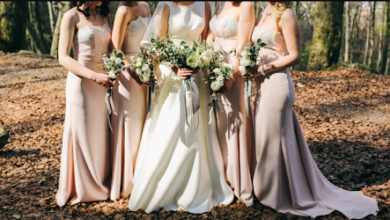The beauty industry has always been at the forefront of reinvention and innovation in the e-commerce industry. This year is no exception and neither will 2021. The pandemic has not stopped the industry from inventing advanced tools and techniques designed to improve the makeover process. From better collections of rotating hair curlers to clean beauty concepts and AI cosmetic solutions, along with hyper-personalized skincare, the industry always has something to offer.
So what does the beauty industry have to look forward to in 2021?
Read More : ZAH collection

The New Norm of Inclusive Ranges
The new norm of beauty is simple: inclusivity is invaluable. A survey conducted by Nielsen, a market research company, revealed that in the US, beauty aisles now reflect diversity. In terms of skin foundation alone, the number of unique color ranges has drastically grown as more product lines embraced the needs of their consumers.
The need to find oneself in the products they purchase is reflected in customers who prefer diverse, value-driven products. Data shows that companies embracing inclusivity enjoy a rise in sales as more customers trust their brand.
But being diverse isn’t just about having more than 50 shades of foundation and not taking into account the variety of undertones. It’s about truly understanding what a consumer wants and not disregarding their pursuit of natural beauty.
Tech Partnerships: VR, AR, and the Virtual World
Augmented reality (AR) is slowly making its way to the beauty world. In 2019, Perfect Corp, a leading AR company, partners with Jack Ma’s Alibaba Group, to integrate AR-powered virtual try-on features into Tmall Alibaba and Taobao’s online shopping experiences. The AR feature enabled shoppers to virtually swatch their makeup purchases before hitting the “Check Out” button. Just six months into the AR project, Alibaba reported an increase in their conversion rates.
Since then, new technology has been a must-have for household brands, such as NARS, MAC, and L’Oreal. Due to the global pandemic preventing shoppers from personally trying on the products, these brands are shifting to technology platforms, so they can offer the best service possible.
Some brands are also creating skin analysis tools powered by computer vision and deep learning. These tools give customers with smartphones the chance to identify major skin concerns such as hyperpigmentation, dullness, wrinkles and texture.
Social media platforms have also joined the AR craze. For example, Facebook’s Spark AR studio has also embraced the rise of interactivity. The social media giant (along with other platforms such as YouTube and Instagram) incorporated its technology into advertisements. Once consumers click on the ad, they can virtually try makeup products without leaving the app.
Big Data for New Product Development
The next trend in the beauty industry can be found in the community. IPSY Co-founder Jennifer Goldfarb stated the same idea during the Digital Beauty Forum in 2020 fromWomen’s Wear Daily. According to Goldfarb, the brands that will succeed in 2021 are those who bring their fans, followers, and customers into their brand – help them build the brand, develop the products and market the new release.
Brands are achieving these and more using big data, which they collect through search term data, questionnaires and spending habits. They are implementing newer digital strategies that help them develop a deeper and better understanding of what their customers really want.
Olay improved their trajectory by partnering with Procter and Gamble to launch the Olay Skin Advisor, a web-based tool that helps users determine the right products for their skin.
Clean and Natural Beauty is the Way to Go
Consumers prefer brands that are honest and open in their ingredient list, as well as those that use natural products. While clean beauty has been a trend since 2018, it has been a confusing, controversial and enigmatic subject that presents more questions.
The Food and Drug Administration (FDA) and the European Union (EU) for example, vary on their list of banned ingredients – the FDA’s list contains 11 ingredients while the EU bans 1,328. More brands, however, are starting to practice transparent and minimalistic approaches as consumers have become more mindful of the ingredients lists of their products.
Invest in the Influencers
Influencers have been part of the beauty industry for the past few years – and it’s a trend that’s not going anywhere soon. Due to the rise of influencers, the beauty industry has finally experienced huge returns on their investment.
If there’s a newer trend in the beauty influencer industry, it’s authenticity. Beauty brands would rather work with influencers who authentically stand out in the crowded beauty influencer landscape. The more honest an influencer, the more followers they have. More followers mean more potential customers.
The pandemic might have put society on hold but the beauty industry continues to move forward with innovations for a simpler (yet better) approach to beauty.





